If you are in Portland, Oregon, and wondering about the next place to visit near me: then the Japanese Botanical Garden (AKA: Lan Su Garden) is the first place I would recommend. Before going further talking about it it is important to mention Washington Park because that’s where the Japanese Garden is located.

The Travel Destination Collection Represents To You – Washington Park:
Washington Park has a unique stunning beauty located in Portland, Oregon; there is a lot to discover in the park including Museums, public arts, amphitheaters, zoos, and gardens. My main focus in this blog is the Japanese and Chinese gardens. However, part 1 only talks about the Chinese Botanical Garden, and part 2 will cover the Japanese Botanical Garden.
This is part 2, the Japanese Garden. If you wish to read Part 1: the Chinese Botanical Garden, click here.

Location of The Japanese Garden in Portland:
To be specific, the Japanese Garden is located directly above the International Rose Test Garden in Washington Park at 611 SW Kingston Avenue, Portland, Oregon 97205.
The Japanese Garden Portland History:
In 1959, Sapporo city, Japan, and Portland became sister cities, and the garden was built as a result. It was meant to establish a new beginning after the war and increase both Oregon’s and Japan’s economies.
Ever since, the Japanese botanical Garden became one of the greatest cultural attractions in Portland, Oregon. It became an opportunity to experience Japanese culture outside of Japan.
Some Side Note and Travel Tips:
Most of the trees planted in the Garden are actually donated from people’s backyards.
The best time most people prefer to visit is during the spring because that’s the time where flowers bloom.
The best time to visit the Japanese garden is in the afternoon between 3:00 pm – 3:30 pm because it is this period where the sunlight and the tree shade create such beautiful scenic.

5 Principal Gardens, Japanese Botanical Garden In Portland Symbolism:
1- The strolling Pond Garden and Its Symbolism:
You can hear the waterfall streaming in the Strolling Pond Garden from a distance. It is calming and pleasant to look at. Once you get closer and hear the heavy waterfall get stronger, you can feel it cleansing your body and mind.
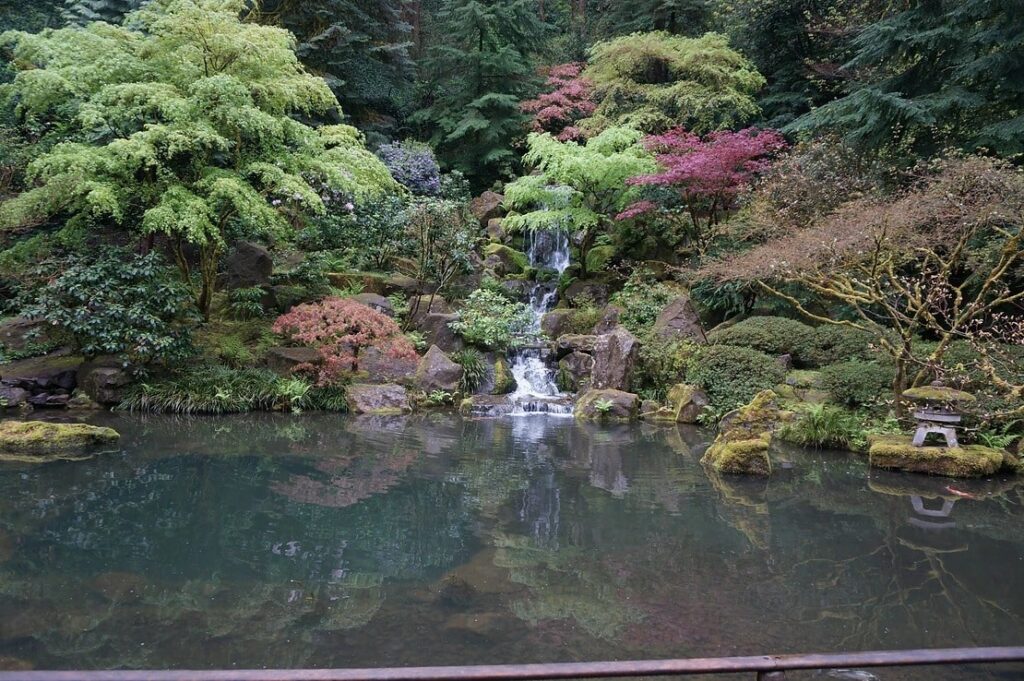
It surely can put you into a meditation state and retain your focus. This is one of the reasons the Japanese Garden in Portland is one of the world’s most beautiful gardens. People from all over the world, such as photographers come to just experience it and take pictures of the waterfall in the strolling pond garden.
The Strolling Pond Garden consists of two ponds: the upper pond and the lower pond. The lower pond features the Moon Bridge and the lower pond has a zig-zag bridge.
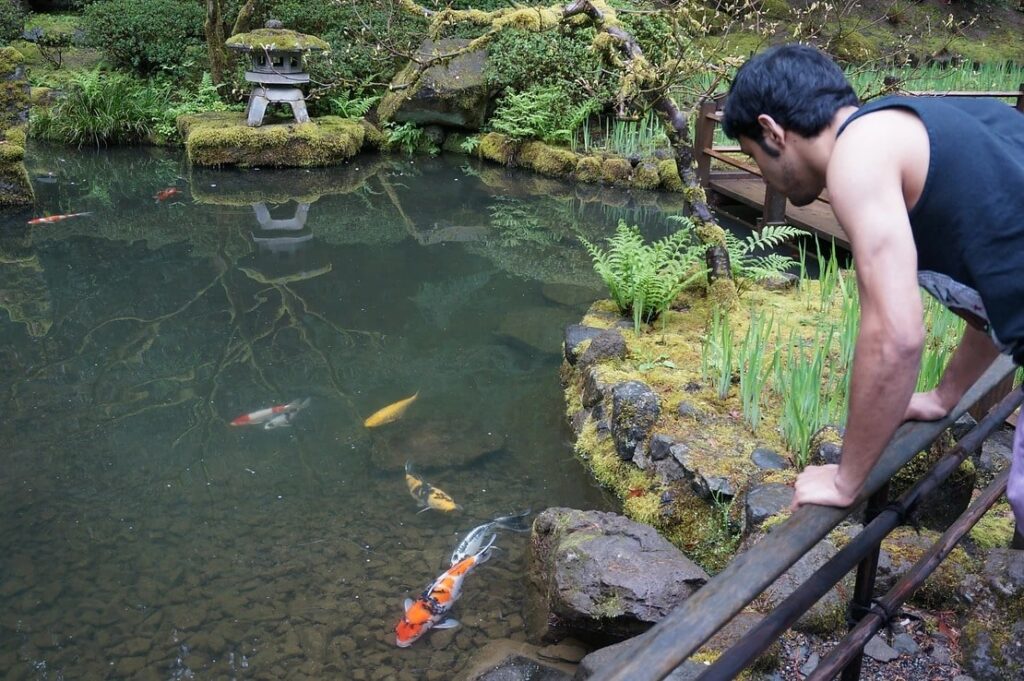
2- The Tea Garden and Kashintei Tea House:
The Tea Garden is a quiet reflection of natural beauty and a pathway to tranquility. On the sidewalk, stepping stones and lanterns were carefully placed leading to the Kahintei Tea house. Kashintei: (literally “Flower-Heart Room”)
Symbolism: the experience of walking through the Roji Path to Kathintei Tea House is meant to give the guest a sense of traveling out of the city and deep into the mountains to the hermitage. Once they arrive at the tea house where they can rest and relax. Perhaps, they get entertained by the Tea ceremony (Chanoyu).
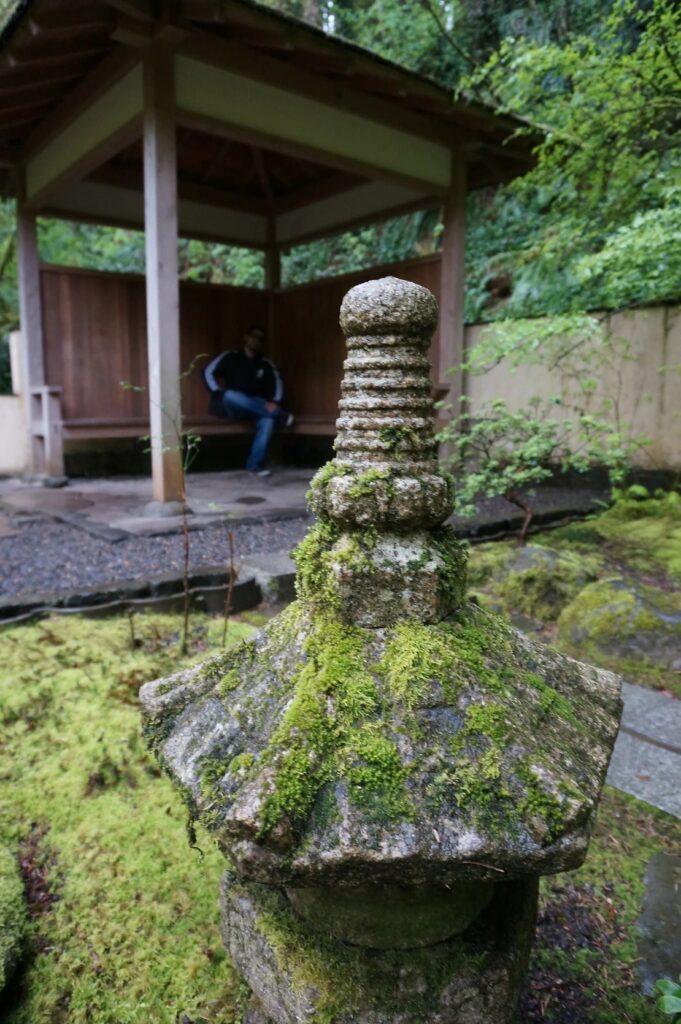
3- The Natural Garden: Previously known As Hillside Garden.
The natural Garden was made to encourage visitors to rest and contemplate the essence and brevity of life. It has many different biological trees some of which are not Japanese. The style is referred to as Zoki No Niwa.
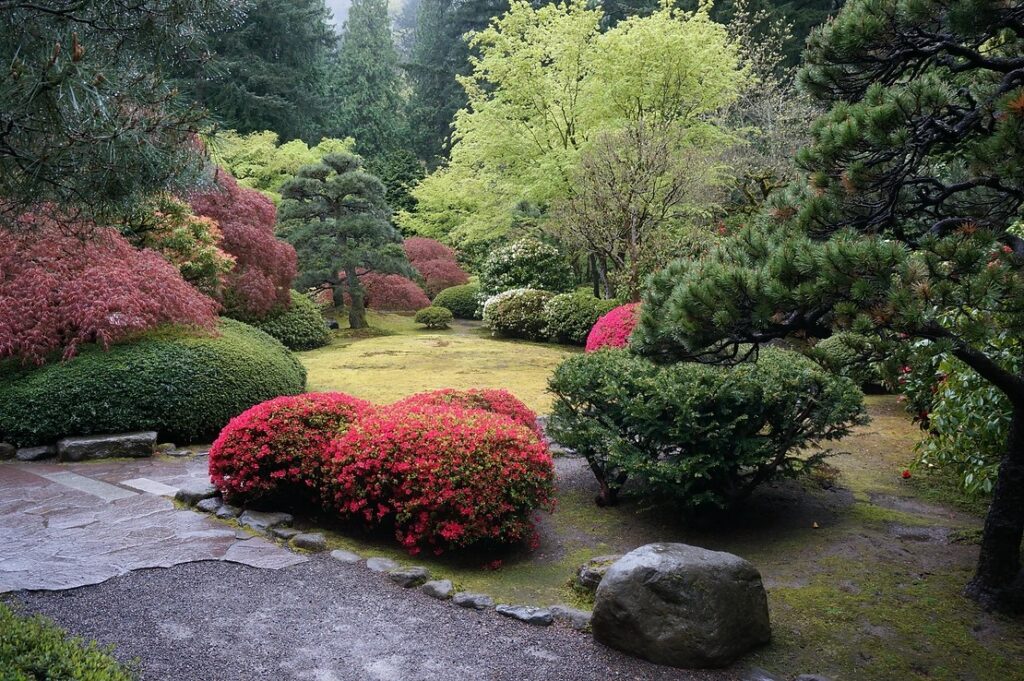
4- The Flat Garden:
The Flat Garden is also known as the pavilion area. It features views and characteristics of the Japanese design. All the empty spaces, shapes, and forms are meant to fit perfectly and create an ecosystem. Click here to learn more about it and its symbolism.
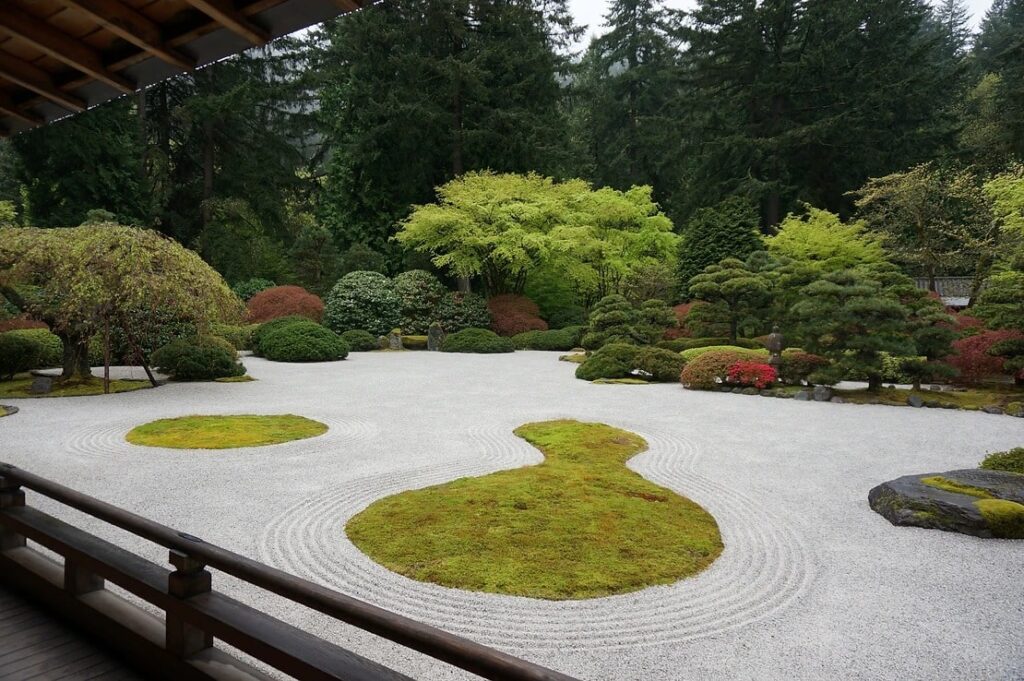
5- The Sand and Stone Garden (Zen/ Karesansui Garden):
Karesansui means (dry mountain water) in Japanese. If you look carefully you can see rake patterns that represent the ripples in the water. It is a good place to contemplate and relax your eyes. You can also walk barefoot and relax your feet. Click here to learn the story behind it and its symbolism.
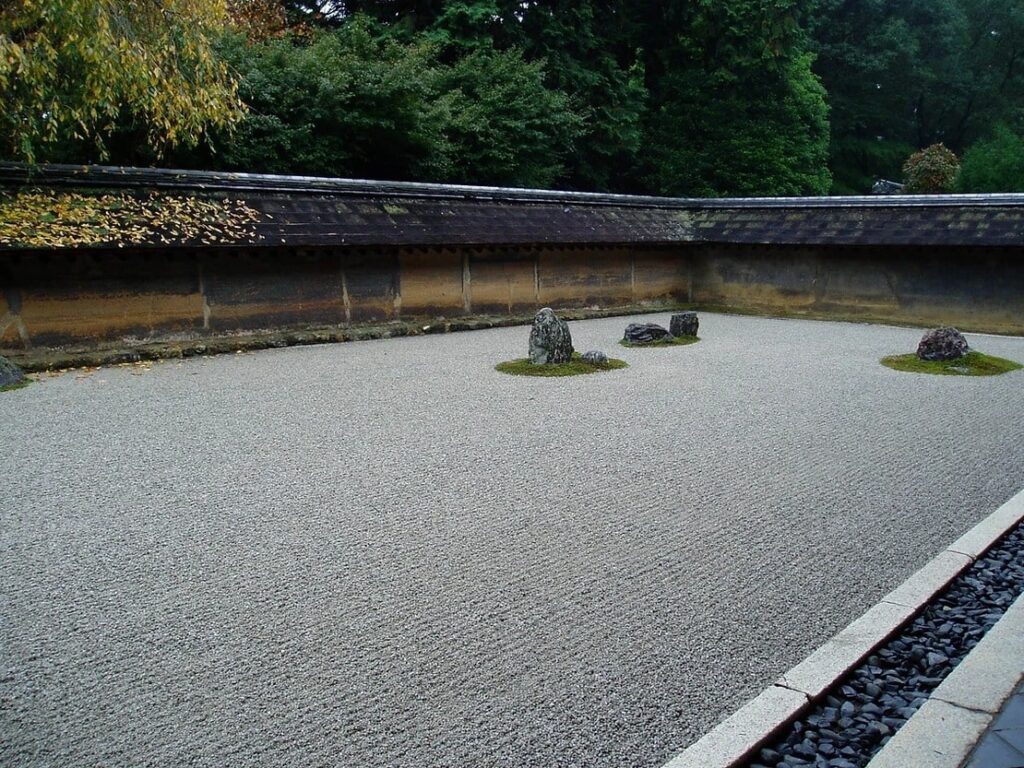
Culture Crossing Village: (Pavilion Gallery).
The Culture Crossing Village was established in 2017. It is the place where you can eat, shop, watch performance art, and get educated and inspired. It is also a great place to learn Japanese culture and experience their true art, such as dancing, music, and talk series.

The Culture Crossing Village also overlooks a beautiful view of Mount Hood. It is the most scenic view of the garden and maybe Washington Park, so prepare your camera to snap a picture.
Traditional Zagunis Castle Wall:
At the top of the village is located a traditional Zagunis castle wall that holds back the mountainsides above. It is stuck with granite from Baker City. One interesting fact about the Castle wall is that the granites are stacked without any cement (dray stack).
It only holds still by gravity as the weight of the stone holds it in place. The shape is designed to be earthquake-proof, which means it cannot be affected by an earthquake.
Umami Café:
Side Note: Garden admission or membership is required to visit the Umami Café.
The Umami Cafe is a place for you to relax and contemplate the beauty of the garden. You can try the traditional Japanese tea with Gracious. It is a drink that won’t be found anywhere else except in the Umami Cafe and the Tokyo Jugetsudo tea company, Ajinomoto. Therefore, you do not want to miss it. You can also grab a snack from the Japanese confectioneries presented there.
Final Note:
On a final note, the Japanese Botanical Garden is not like any other gardens we usually see. In comparison to the Chinese Garden, it is a total paradise. I honestly enjoyed both, but I like the Japanese Botanical Garden because it is more spacious and there is more to see. I am curious to know; please answer this question.
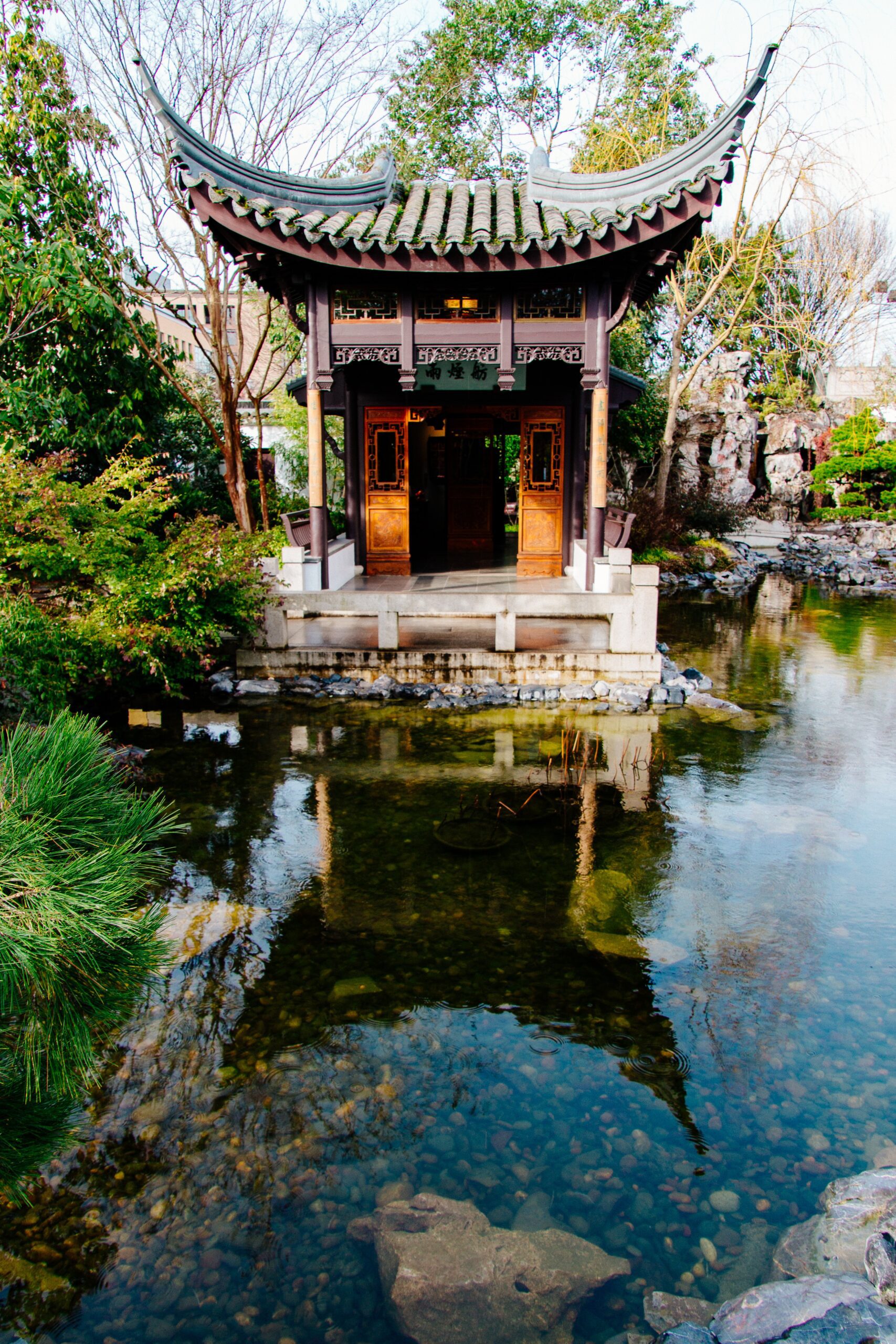
Leave a Reply